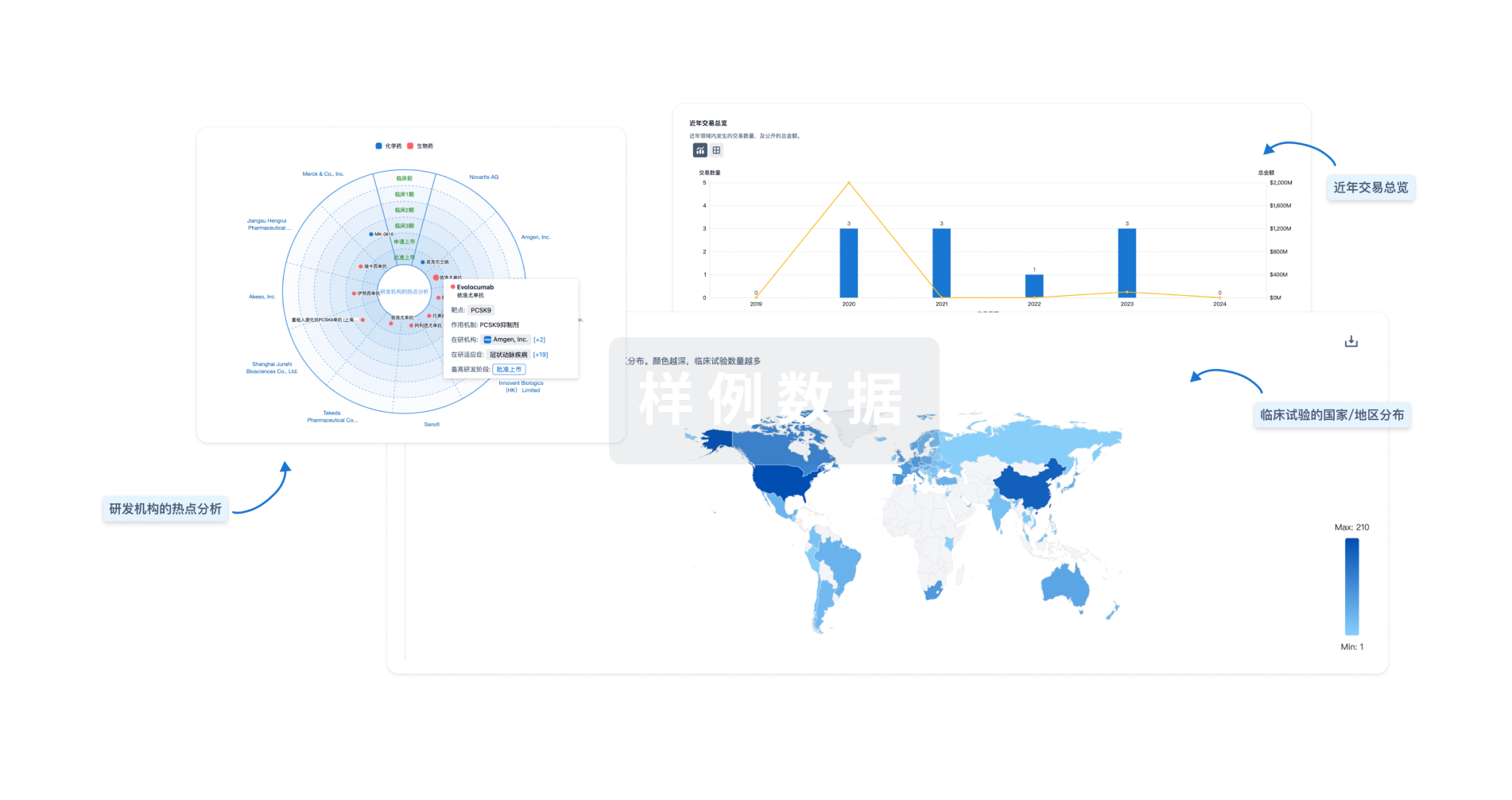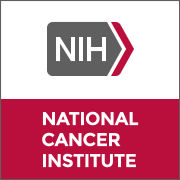预约演示
更新于:2025-05-07
SRC
更新于:2025-05-07
基本信息
别名 ASV、c-src、p60-Src + [8] |
简介 Non-receptor protein tyrosine kinase which is activated following engagement of many different classes of cellular receptors including immune response receptors, integrins and other adhesion receptors, receptor protein tyrosine kinases, G protein-coupled receptors as well as cytokine receptors (PubMed:34234773). Participates in signaling pathways that control a diverse spectrum of biological activities including gene transcription, immune response, cell adhesion, cell cycle progression, apoptosis, migration, and transformation. Due to functional redundancy between members of the SRC kinase family, identification of the specific role of each SRC kinase is very difficult. SRC appears to be one of the primary kinases activated following engagement of receptors and plays a role in the activation of other protein tyrosine kinase (PTK) families. Receptor clustering or dimerization leads to recruitment of SRC to the receptor complexes where it phosphorylates the tyrosine residues within the receptor cytoplasmic domains. Plays an important role in the regulation of cytoskeletal organization through phosphorylation of specific substrates such as AFAP1. Phosphorylation of AFAP1 allows the SRC SH2 domain to bind AFAP1 and to localize to actin filaments. Cytoskeletal reorganization is also controlled through the phosphorylation of cortactin (CTTN) (Probable). When cells adhere via focal adhesions to the extracellular matrix, signals are transmitted by integrins into the cell resulting in tyrosine phosphorylation of a number of focal adhesion proteins, including PTK2/FAK1 and paxillin (PXN) (PubMed:21411625). In addition to phosphorylating focal adhesion proteins, SRC is also active at the sites of cell-cell contact adherens junctions and phosphorylates substrates such as beta-catenin (CTNNB1), delta-catenin (CTNND1), and plakoglobin (JUP). Another type of cell-cell junction, the gap junction, is also a target for SRC, which phosphorylates connexin-43 (GJA1). SRC is implicated in regulation of pre-mRNA-processing and phosphorylates RNA-binding proteins such as KHDRBS1 (Probable). Phosphorylates PKP3 at 'Tyr-195' in response to reactive oxygen species, which may cause the release of PKP3 from desmosome cell junctions into the cytoplasm (PubMed:25501895). Also plays a role in PDGF-mediated tyrosine phosphorylation of both STAT1 and STAT3, leading to increased DNA binding activity of these transcription factors (By similarity). Involved in the RAS pathway through phosphorylation of RASA1 and RASGRF1 (PubMed:11389730). Plays a role in EGF-mediated calcium-activated chloride channel activation (PubMed:18586953). Required for epidermal growth factor receptor (EGFR) internalization through phosphorylation of clathrin heavy chain (CLTC and CLTCL1) at 'Tyr-1477'. Involved in beta-arrestin (ARRB1 and ARRB2) desensitization through phosphorylation and activation of GRK2, leading to beta-arrestin phosphorylation and internalization. Has a critical role in the stimulation of the CDK20/MAPK3 mitogen-activated protein kinase cascade by epidermal growth factor (Probable). Might be involved not only in mediating the transduction of mitogenic signals at the level of the plasma membrane but also in controlling progression through the cell cycle via interaction with regulatory proteins in the nucleus (PubMed:7853507). Plays an important role in osteoclastic bone resorption in conjunction with PTK2B/PYK2. Both the formation of a SRC-PTK2B/PYK2 complex and SRC kinase activity are necessary for this function. Recruited to activated integrins by PTK2B/PYK2, thereby phosphorylating CBL, which in turn induces the activation and recruitment of phosphatidylinositol 3-kinase to the cell membrane in a signaling pathway that is critical for osteoclast function (PubMed:14585963, PubMed:8755529). Promotes energy production in osteoclasts by activating mitochondrial cytochrome C oxidase (PubMed:12615910). Phosphorylates DDR2 on tyrosine residues, thereby promoting its subsequent autophosphorylation (PubMed:16186108). Phosphorylates RUNX3 and COX2 on tyrosine residues, TNK2 on 'Tyr-284' and CBL on 'Tyr-731' (PubMed:20100835, PubMed:21309750). Enhances RIGI-elicited antiviral signaling (PubMed:19419966). Phosphorylates PDPK1 at 'Tyr-9', 'Tyr-373' and 'Tyr-376' (PubMed:14585963). Phosphorylates BCAR1 at 'Tyr-128' (PubMed:22710723). Phosphorylates CBLC at multiple tyrosine residues, phosphorylation at 'Tyr-341' activates CBLC E3 activity (PubMed:20525694). Phosphorylates synaptic vesicle protein synaptophysin (SYP) (By similarity). Involved in anchorage-independent cell growth (PubMed:19307596). Required for podosome formation (By similarity). Mediates IL6 signaling by activating YAP1-NOTCH pathway to induce inflammation-induced epithelial regeneration (PubMed:25731159). Phosphorylates OTUB1, promoting deubiquitination of RPTOR (PubMed:35927303). Phosphorylates caspase CASP8 at 'Tyr-380' which negatively regulates CASP8 processing and activation, down-regulating CASP8 proapoptotic function (PubMed:16619028).
Non-receptor protein tyrosine kinase which phosphorylates synaptophysin with high affinity.
Non-receptor protein tyrosine kinase which shows higher basal kinase activity than isoform 1, possibly due to weakened intramolecular interactions which enhance autophosphorylation of Tyr-419 and subsequent activation (By similarity). The SH3 domain shows reduced affinity with the linker sequence between the SH2 and kinase domains which may account for the increased basal activity (By similarity). Displays altered substrate specificity compared to isoform 1, showing weak affinity for synaptophysin and for peptide substrates containing class I or class II SH3 domain-binding motifs (By similarity). Plays a role in L1CAM-mediated neurite elongation, possibly by acting downstream of L1CAM to drive cytoskeletal rearrangements involved in neurite outgrowth (By similarity).
Non-receptor protein tyrosine kinase which shows higher basal kinase activity than isoform 1, possibly due to weakened intramolecular interactions which enhance autophosphorylation of Tyr-419 and subsequent activation (By similarity). The SH3 domain shows reduced affinity with the linker sequence between the SH2 and kinase domains which may account for the increased basal activity (By similarity). Displays altered substrate specificity compared to isoform 1, showing weak affinity for synaptophysin and for peptide substrates containing class I or class II SH3 domain-binding motifs (By similarity). Plays a role in neurite elongation (By similarity). |
关联
99
项与 SRC 相关的药物作用机制 SRC抑制剂 [+1] |
在研机构 |
原研机构 |
最高研发阶段批准上市 |
首次获批国家/地区 美国 |
首次获批日期2020-12-14 |
作用机制 Bcr-Abl抑制剂 [+1] |
在研机构 |
原研机构 |
最高研发阶段批准上市 |
首次获批国家/地区 美国 |
首次获批日期2012-09-04 |
作用机制 Bcr-Abl抑制剂 [+9] |
在研适应症 |
非在研适应症 |
最高研发阶段批准上市 |
首次获批国家/地区 美国 |
首次获批日期2006-06-28 |
560
项与 SRC 相关的临床试验NCT05944783
Bioequivalence Studies of Dasatinib 100 Mg Tablets in Healthy Colombian Subjects in Postprandial Condition
A bioequivalence study of Dasatinib will be carried out in 46 healthy subjects, in fed condition, following the complete replicated design, randomized, comparative of 2 sequences, 2 study formulations, in a single dose of 100 mg of Dasatinib tablets / coated tablets, 4 periods. , with a washout time of 7 days between each dose
开始日期2025-09-01 |
申办/合作机构- |
NCT06124157
A Randomized International Phase 3 Trial of Imatinib and Chemotherapy With or Without Blinatumomab in Patients With Newly-Diagnosed Philadelphia Chromosome-Positive or Philadelphia Chromosome-Like ABL-Class B-Cell Acute Lymphoblastic Leukemia
This phase III trial compares the effect of the combination of blinatumomab with dasatinib and standard chemotherapy versus dasatinib and standard chemotherapy for treating patients with Philadelphia chromosome positive (PH+) or Philadelphia chromosome-like (Ph-Like) ABL-class B-Cell acute lymphoblastic leukemia (B-ALL). Blinatumomab is a bispecific antibody that binds to two different proteins-one on the surface of cancer cells and one on the surface of cells in the immune system. An antibody is a protein made by the immune system to help fight infections and other harmful processes/cells/molecules. Blinatumomab may bind to the cancer cell and a T cell (which plays a key role in the immune system's fighting response) at the same time. Blinatumomab may strengthen the immune system's ability to fight cancer cells by activating the body's own immune cells to destroy the tumor. Dasatinib is in a class of medications called tyrosine kinase inhibitors. It works by blocking the action of an abnormal protein that signals cancer cells to multiply, which may help keep cancer cells from growing. Giving blinatumomab and dasatinib in combination with standard chemotherapy may work better in treating patients with PH+ or Ph-Like ABL-class B-ALL compared to dasatinib and chemotherapy alone.
开始日期2025-05-29 |
申办/合作机构 |
NCT06940297
DART: Phase II Study of Dasatinib and Quercetin in Patients With Relapsed, Refractory Multiple Myeloma Receiving CAR-T Therapy
This phase II trial tests how well giving dasatinib and quercetin with cyclophosphamide, fludarabine and chimeric antigen receptor (CAR)-T cell therapy works in treating patients with multiple myeloma that has come back after a period of improvement (relapsed) or that has not responded to previous treatment (refractory). Dasatinib is in a class of medications called tyrosine kinase inhibitors. It works by blocking the action of an abnormal protein that signals cancer cells to multiply, which may help keep cancer cells from growing. Quercetin is a compound found in plants that may prevent multiple myeloma from forming. Chemotherapy such as cyclophosphamide and fludarabine are given to help kill any remaining cancer cells in the body and to prepare the bone marrow for CAR-T therapy. Chimeric antigen receptor T-cell Therapy is a type of treatment in which a patient's T cells (a type of immune system cell) are changed in the laboratory so they will attack cancer cells. T cells are taken from a patient's blood. Then the gene for a special receptor that binds to a certain protein on the patient's cancer cells is added to the T cells in the laboratory. The special receptor is called a chimeric antigen receptor. Large numbers of the CAR T cells are grown in the laboratory and given to the patient by infusion for treatment of certain cancers. Giving dasatinib and quercetin with cyclophosphamide, fludarabine and CAR-T cell therapy may kill more cancer cells in patients with relapsed or refractory multiple myeloma.
开始日期2025-05-15 |
申办/合作机构  Mayo Clinic Mayo Clinic [+1] |
100 项与 SRC 相关的临床结果
登录后查看更多信息
100 项与 SRC 相关的转化医学
登录后查看更多信息
0 项与 SRC 相关的专利(医药)
登录后查看更多信息
19,648
项与 SRC 相关的文献(医药)2025-12-31·Virulence
Ponatinib and other clinically approved inhibitors of Src and Rho-A kinases abrogate dengue virus serotype 2- induced endothelial permeability
Article
作者: Awasthi, Mansi ; Sreekumar, Easwaran ; Sobha, Archana ; Modak, Ayan ; Mishra, Srishti Rajkumar
2025-12-01·Histochemistry and Cell Biology
Red deer (Cervus elaphus L.) antler stem cell culture medium inhibits prostate cancer cells
Article
作者: Kaingu, Catherine Kaluwa ; Dulińska-Litewka, Joanna ; Korzekwa, Anna Justyna ; Zarzycka, Marta ; Kotula-Balak, Małgorzata
2025-12-01·Molecular Genetics and Genomics
Differential effects of β-hydroxybutyrate and α-ketoglutarate on HCT-116 colorectal cancer cell viability under normoxic and hypoxic low-glucose conditions: exploring the role of SRC, HIF1α, ACAT1, and SIRT2 genes
Article
作者: Shafiee, Sayed Mohammad ; Ranjkesh, Roza ; Maleki, Mohammad Hasan ; Rezaei, Roya ; Akhlaghi Tabar, Farideh ; Vakili, Omid ; Mohammadipoor, Nima ; Badameh, Parisa
159
项与 SRC 相关的新闻(医药)2025-05-04
·小药说药
-01-引言肥大细胞(MC)是存在于我们体内结缔组织中的髓系细胞,含有具有有效炎症介质的粗颗粒,如组胺。长期以来肥大细胞一直被认为与过敏性和自身免疫性疾病的发病机制有关,然而现在人们认识到肥大细胞对肿瘤细胞和肿瘤微环境行为具有决定性的影响,是抗肿瘤免疫的关键协调器、肿瘤基质的调节剂,并且与癌细胞的内在特性有关。然而,它们的作用仍然存在争议,因为MCs可以在不同的肿瘤类型中发挥促肿瘤或抗肿瘤功能,这取决于它们在肿瘤内或肿瘤周围的位置以及它们与肿瘤微环境其他成分的相互作用。因此,肥大细胞是一个未被充分认识但非常有希望的癌症免疫治疗靶点。-02-一、肥大细胞的生物学MCs是来源于骨髓多能干造血细胞的先天免疫细胞,在血液中循环并迁移到外周组织,在组织特异性趋化因子和细胞因子(如干细胞因子和IL-4)、细胞外基质蛋白和粘附分子的作用下发育并分化为成熟肥大细胞。MC分布在身体的不同区域,如上皮细胞、粘膜、胃肠道、产生粘液的腺体以及神经和血管周围区域。在MC表面有多种受体,一旦被它们的配体触发,可以释放各种不同的因子。这些包括预先形成的分子(组胺、类胰蛋白酶、蛋白酶和蛋白多糖)和新合成的脂质介质(白三烯和前列腺素)、细胞因子(IL-4、TNFα、TGF-β、IL-1β)和趋化因子(IL-18、CCL2、CCL4)。预先形成的介质沉淀在MC细胞质中的大颗粒中。每个MC被赋予大约50-200个颗粒,在适当的刺激下,这些颗粒在几秒钟内被输送到细胞外。这个过程被称为MC脱颗粒。肥大细胞存在两种类型的脱颗粒:过敏性脱颗粒,其中整个颗粒内容物迅速释放到细胞外环境;以及分段脱颗粒,颗粒内容物以更有层次,更具体的方式释放。研究最充分的肥大细胞脱颗粒发生机制是暴露于同源抗原后,高亲和力IgE表面受体FcεRI的抗原特异性IgE交联,导致肥大细胞快速脱颗粒。肥大细胞也可以通过其他机制激活,如通过toll样受体、补体蛋白、细胞因子和其他刺激物的损伤相关和病原体相关分子模式。肥大细胞激活、脱颗粒和/或炎症介质分泌的结果包括其他免疫、基质、神经和上皮细胞的激活或吸引,从而导致局部组织微环境的变化,如血管扩张和血管生成,以及全身免疫反应的激活。肥大细胞活化和/或脱颗粒可能以经典的快速方式发生,导致炎症介质的大量释放和剧烈的临床表现,如过敏反应和血管性水肿。然而,随着特定介质的缓慢释放,这些过程也会逐渐发生,导致慢性炎症和局部组织改变。后一种形式的肥大细胞激活在癌症中尤其重要。-03- 二、癌症中的肥大细胞MC在癌症相关领域得到了越来越多的关注。然而,它们的作用具有两面性,在不同的情况下促进或抑制肿瘤的发展。MCs的促肿瘤功能MC可以支持血管生成、炎症和体内平衡,从而支持癌症的发展。MC还释放类胰蛋白酶和糜蛋白酶等蛋白酶,可激活基质金属蛋白酶,降解细胞外基质和肿瘤周围组织,从而促进肿瘤生长、血管生成和转移。此外,MC释放VEGF、PDGF-β和IL-6,促进血管形成、细胞增殖和肿瘤生长。在胰腺癌患者中,MC在肿瘤病灶内的积聚与预后不良相关。在Myc诱导的β细胞胰腺癌小鼠模型中,当MC脱颗粒受到化学抑制时,肿瘤发展和血管生成减少。MCs的抗肿瘤功能肥大细胞在调节肿瘤进展中的一个关键作用是其作为前哨免疫细胞的作用,其释放趋化因子、细胞因子和其他因子,将其他免疫细胞招募到肿瘤微环境中并改变其功能。肥大细胞释放趋化因子,如CXCL10、CLL3和CCL5,它们将CD8+T细胞和CD4+T细胞招募到肿瘤中,它们可以通过TNF-α分泌进一步调节T细胞活性。肥大细胞分泌的组胺有利于特定的辅助性T细胞亚型或T细胞调节反应,这取决于受刺激的受体。活化的肥大细胞也被证明可以上调MHC-II和共刺激分子,作为T细胞的局部抗原呈递细胞发挥作用。总之,肿瘤、基质和免疫微环境中肥大细胞诱导的抗肿瘤和促肿瘤信号的净平衡决定了肿瘤相关肥大细胞如何影响最终肿瘤生长。正确理解这些因素是如何相互作用的,对于研究相关的肥大细胞生物学以及如何将肥大细胞作为改善癌症预后的最佳治疗选择具有重要意义。-04-三、TME中MC与其他免疫细胞的相互作用MCs还可以调节TME中其他免疫细胞的功能,从而影响局部免疫抑制或抗肿瘤免疫。例如,在小鼠肝癌模型中,已经表明活化的MCs可以通过CCL2/CCR2轴促进髓源性抑制细胞(MDSCs)的浸润及其IL-17的产生,从而在肿瘤部位募集Tregs。此外,MC可以通过CD40L/CD40轴的直接相互作用增加MDSCs的抑制活性。MCs上的CD40L也可以促进产生IL-10的调节性B细胞(Breg)的扩增。另一方面,在结直肠癌中,MC可以切换Tregs的功能,Tregs下调IL-10并开始产生IL-17,从而获得促炎症表型。值得注意的是,MC介导的Tregs和效应T细胞向Th17的偏斜依赖于OX40L/OX40轴和IL-6产生之间的串扰。此外,MC衍生的TNF-α对T细胞活化也很重要。MCs产生骨桥蛋白和表达共刺激分子也促进了CD8+T细胞的活化和增殖。MCs可以通过释放白三烯B4影响效应CD8+T细胞向炎症部位的归巢。在小鼠黑色素瘤模型中,还观察到TLR2激活的MC可以通过分泌高剂量的CCL3来募集NK细胞。除CCL3外,MC分泌的其他因子,如IL-4、IL-12和TNF-α,也能够激活NK细胞。上述相互矛盾的结果表明,根据癌症的分期、癌周或癌内定位以及与TME其他细胞的串扰,MC及其介质可能具有不同的作用。-05-四、靶向肥大细胞的肿瘤免疫治疗由于MC可以根据肿瘤类型、定位和从周围微环境接收的信号发挥促肿瘤或抑肿瘤活性,因此治疗策略可以根据环境来消除或促进MC功能。靶向c-Kit信号由于c-Kit对MC的发育、存活和激活至关重要,因此酪氨酸激酶抑制剂,如伊马替尼、尼洛替尼或达沙替尼,可有效用于靶向肥大细胞增多症、关节炎或过敏反应中的MC。然而,到目前为止,这些药物在抑制MC肿瘤促进功能方面的应用有限。需要强调的是,伊马替尼、尼洛替尼或达沙替尼对c-Kit没有特异性,因为它们也靶向其他激酶受体,如PDGFR、Src和Abl激酶,因此可能具有脱靶作用。为了克服这些限制,已经开发了一种靶向c-Kit的单克隆抗体,barzolvolimab,但迄今为止仅在c-Kit阳性胃肠道肿瘤中进行了测试。稳定MC脱颗粒可以抑制MC脱颗粒的药物,如色甘酸或酮替芬,已被广泛用于治疗过敏反应;其也在实体瘤的不同临床前模型中进行了研究。在甲状腺癌的异种移植小鼠模型中,用色甘酸治疗可显著降低肿瘤细胞的增殖和生长。除了稳定和阻止肥大细胞介质的释放,也可以选择肥大细胞的上游信号通路作为靶点。IgE与FcεRI结合导致FcεRI聚集,然后导致受体酪氨酸激活基序的下游磷酸化,最终释放炎性介质。从肥大细胞诱导的炎症有利于诱导抗肿瘤反应的角度出发,提出了抗肿瘤IgE抗体。尤其是在肥大细胞浸润率高的肿瘤中,与IgG抗体相比,FcεRI的高密度和抗体的更长半衰期使其成为一种有吸引力的治疗方法。在体外研究中,通过肿瘤靶向的人源化单克隆抗HER-2/neu IgE和人源化抗CD20 IgE观察到抗肿瘤肥大细胞脱颗粒和肿瘤细胞生长减少。触发其他激活/抑制受体除了c-Kit和FcεRI外,MC还有大量不同的受体可以调节其在TME中的功能;因此,这些受体可能成为MC特异性抗癌治疗的靶点。MCs中TLRs的刺激可导致特异性细胞因子分泌,从而导致免疫细胞的募集和激活,最终抑制肿瘤生长。事实上,目前正在评估TLR激动剂在癌症治疗中的作用。在B16.F10小鼠黑色素瘤模型中,TLR2激动剂Pam3CSK4诱导MCs释放细胞因子,如IL-6和CCL3,这分别介导了对肿瘤细胞的直接抗增殖作用以及NK和T细胞的募集。其他受体也被证明对MC与免疫抑制细胞的相互作用至关重要,例如CD40L和OX40L。MC还可以通过其表面的PD-L1直接抑制CD8+T细胞活化。因此,MCs可能是肿瘤中免疫检查点阻断治疗的另一个靶点。在胃癌模型中,MC相关PD-L1的抑制导致T细胞活化增加和肿瘤生长的抑制。调节MC招募靶向MC治疗一种可能的策略是通过作用于趋化途径来抑制或增加其募集。除了调节MC成熟、增殖和脱颗粒外,SCF/c-Kit和FcεRI信号传导也可以介导MC迁移。因此,c-Kit、BTK、Syk和PI3K的抑制剂也可以抑制肿瘤中的MC运输。此外,由肿瘤细胞或TME细胞产生的许多其他不同分子可以诱导MC趋化性,包括CCL2、CCL5、CCL11、CCL15、CXCL12、VEGF、FGF2、骨桥蛋白和脂质介质。阻断这些趋化引诱剂可能代表一种治疗策略,以阻碍MC的募集,从而阻碍它们对肿瘤的支持。靶向MC调解剂直接调节肥大细胞介质是改变肥大细胞下游活化的有效方法,包括靶向组胺或组胺受体、类胰蛋白酶等蛋白酶和TNF-α。类胰蛋白酶是肥大细胞活化过程中释放的一种肥大细胞介质,促进血管生成和细胞外基质降解,导致癌症生长、细胞侵袭和转移。Tranilast, nafamostat mesylate和gabexatemesylate是三种肥大细胞类胰蛋白酶抑制剂,临床前已证明其作为单一疗法或与其他癌症疗法联合使用在多种实体瘤中具有抗癌活性,大多数研究集中在胰腺癌、结直肠癌和乳腺癌。TNF-α是另一种肥大细胞介质,长期以来一直与炎症性肠病的发病机制有关,TNF-α抑制剂(如infliximab)是主要的治疗手段。在一项结肠炎研究中,infliximab治疗可显著降低结直肠癌的发病率。在晚期黑色素瘤的I期临床试验(NCT03293784)中,正在研究ipilimumab、nivolumab和TNF-α抗体(infliximab或certolizumab)的三重组合的安全性。过继转移MC人们也已经开始研究MC的体内过继转移,利用MC的抗肿瘤特性进行细胞治疗以对抗癌症。这种方法应考虑重新编程MCs,以便仅在与肿瘤细胞接触时释放抗肿瘤介质,以避免非靶向的分子递送、过敏反应或其他副作用。Fereyoduni等人在这方面进行了首次尝试,他们利用HER2/neu特异性IgE预敏化的MC在体外和体内有效杀死乳腺癌症模型中HER2/neu表达的肿瘤细胞。-06-结语一系列关于实体瘤的临床前研究数据强烈表明,肥大细胞是抗肿瘤免疫和癌症预后的关键决定因素。肥大细胞可能是抗肿瘤免疫反应的关键协调器,但也存在抵抗免疫检查点阻断以及其他癌症治疗的机制。随着肥大细胞靶向疗法在过敏性疾病中的应用和研究日益增多,其在癌症免疫治疗中的应用呈现出令人兴奋的前景。参考资料:1.Mast Cells: A New Frontier for CancerImmunotherapy. Cells.2021 Jun; 10(6): 1270.2. Frenemies in the Microenvironment: Harnessing Mast Cells for Cancer Immunotherapy. Pharmaceutics.2023 Jun 9;15(6):1692.公众号内回复“ADC”或扫描下方图片中的二维码免费下载《抗体偶联药物:从基础到临床》的PDF格式电子书!公众号已建立“小药说药专业交流群”微信行业交流群以及读者交流群,扫描下方小编二维码加入,入行业群请主动告知姓名、工作单位和职务。
免疫疗法
2025-04-28
ROCKVILLE, Md. and SUZHOU, China, April 28, 2025 (GLOBE NEWSWIRE) -- Ascentage Pharma (NASDAQ: AAPG; HKEX: 6855), a global biopharmaceutical company engaged in discovering, developing, and commercializing therapies to address global unmet medical needs primarily for hematological malignancies, today announced that it has presented results from five preclinical studies during poster presentations at the 2025 American Association for Cancer Research (AACR) Annual Meeting, taking place April 25-30, 2025, in Chicago, Illinois, USA.
These poster presentations feature five of the company’s drug candidates: novel tyrosine kinase inhibitor (TKI) olverembatinib (HQP1351), Bcl-2 inhibitor lisaftoclax (APG-2575), FAK/ALK/ROS1 TKI APG-2449, embryonic ectoderm development (EED) inhibitor APG-5918, and IAP antagonist AS03157.
Dr. Yifan Zhai, Chief Medical Officer of Ascentage Pharma, said, “The encouraging data from our investigational assets, presented at this year’s AACR Annual Meeting, are another testament to our strong and innovative pipeline. In particular, the combination of olverembatinib and lisaftoclax, two of our key drug candidates, has demonstrated strong synergistic effects in preclinical models of acute myeloid leukemia and T-cell acute lymphoblastic leukemia. These preclinical studies are expected to complement and further catalyze our clinical development. Moving forward, we will actively advance the clinical development of these programs in order to bring more treatment options to patients in need.”
Detailed data presented at this year’s AACR Annual Meeting are as follows:
Olverembatinib (HQP1351) in combination with lisaftoclax (APG-2575) overcomes venetoclax resistance in preclinical models of acute myeloid leukemia (AML)
Abstract#: 5652Session: Novel Antitumor Agents 3
Introduction:
Combining Bcl-2 inhibitor venetoclax with hypomethylating agents is the standard of care for patients with AML who are older or ineligible for intensive chemotherapy. However, resistance to venetoclax is a major clinical challenge, necessitating alternative therapeutic options.
Olverembatinib, a multikinase inhibitor, targets kinases associated with leukemogenesis and venetoclax resistance in AML, including FLT3, cKIT, PDGFR, Src family kinases, PI3K, and FGFR.
Lisaftoclax is an investigational, novel, selective Bcl-2 inhibitor currently being tested clinically for several hematologic malignancies, including relapsed/refractory AML.
In this study, we evaluated the effects of olverembatinib combined with lisaftoclax in venetoclax-resistant (VEN-R) AML models.
Summary:
In VEN-R AML cell lines, the combination of olverembatinib and lisaftoclax synergistically inhibited cellular proliferation and induced cellular apoptosis. Olverembatinib in combination with lisaftoclax synergistically suppressed tumor growth in a MOLM-13-VEN-R AML xenograft model in vivo. Mechanistically, western blot analysis revealed that the combination synergistically downregulated several leukemogenic signaling pathways, including those associated with venetoclax resistance, such as FLT3, AKT, MCL-1, and activated apoptosis. In summary, olverembatinib in combination with lisaftoclax overcame venetoclax resistance in preclinical AML models, warranting further clinical investigation as a new therapeutic strategy for VEN-R AML.
Effects of olverembatinib (HQP1351) in combination with Bcl-2 inhibitor lisaftoclax (APG-2575) in T-cell acute lymphoblastic leukemia (T-ALL)
Abstract#: 5648Session: Novel Antitumor Agents 3
Introduction:
T-ALL is a high-risk hematologic cancer arising from malignant transformation of T-cell progenitors, affecting approximately 15% of newly diagnosed pediatric and 25% of adult ALL cases. Survival in patients with relapsed or refractory disease is poor, with limited treatment options. Some T-ALL subtypes depend on pre-TCR/Src signaling and antiapoptotic Bcl-2 family proteins for growth and survival. Olverembatinib, a novel multikinase inhibitor, targets oncogenic Src-family kinases (Lck, Fyn, and YES1), which are essential for T-cell differentiation, survival, and activation. Lisaftoclax is a novel Bcl-2 inhibitor under investigation in late-stage clinical trials for multiple hematologic malignancies. We evaluated antitumor effects of olverembatinib combined with lisaftoclax in human T-ALL cell lines and xenograft models and explored potential mechanisms of action.
Summary:
Olverembatinib in combination with lisaftoclax synergistically inhibited proliferation and augmented apoptosis in T-ALL cells in vitro. The combination synergistically suppressed tumor growth in a MOLT4 xenograft model in vivo. Mechanistically, olverembatinib inhibited Lck phosphorylation, and when combined with lisaftoclax, synergistically reduced downstream NF-kB p65 and BCL-xL, which is typically upregulated in T-ALL. The combination also downregulated phosphorylation of AKT and GSK3b kinases, resulting in degradation of MCL-1 and c-MYC, an essential pro-oncogenic protein in T-ALL. In summary, our findings provide a scientific rationale for further clinical evaluation of this novel combination therapy in patients with T-ALL.
Embryonic ectoderm development protein (EED) inhibitor APG-5918 exhibits potent antitumor activity and synergizes with androgen receptor (AR) inhibitor enzalutamide in preclinical prostate cancer (PCa) models
Abstract#: 446Session: Experimental and Molecular Therapeutics
Introduction:
Castration-resistant prostate cancer (CRPC) remains incurable due to resistance to therapies including the new generation of androgen receptor pathway inhibitors (ARPIs) such as enzalutamide. Dysregulation of polycomb repressive complex 2 (PRC2) is common in PCa and is associated with poor prognosis and metastasis. The catalytic subunit of PRC2, enhancer of zeste homolog 2 (EZH2), promotes tumor suppressor gene silencing by methylating histone H3 on lysine 27 (H3K27me3) and directly activates AR gene expression. Another core PRC2 component, EED, is essential for the histone methyltransferase activity. Targeting EED has emerged as a promising strategy to inhibit PRC2 function. This study aims to evaluate the antitumor activity and molecular mechanisms of APG-5918, a potent and selective EED inhibitor, alone or in combination with enzalutamide, in preclinical PCa models.
Summary:
APG-5918 demonstrated superior inhibitory effects on PCa cell proliferation in vitro. APG-5918 in combination with enzalutamide synergistically suppressed cell proliferation. APG-5918 induced dose-dependent cell cycle arrest in LNCaP and C4-2B cells. Combining enzalutamide with APG-5918 deepened G0/G1 cell cycle arrest. APG-5918 showed significant antitumor activity in human LNCaP and enzalutamide-resistant 22Rv1 xenograft models in castrated nude mice. Mechanistically, APG-5918 downregulated key on-target PD markers (e.g., H3K27me3, EED, EZH2, SUZ12) and AR pathway proteins. APG-5918 also suppressed oncogenic driver ERG, DNA methylation factors (UHRF1, DNMT1), and antiapoptotic protein MCL-1, and reduced pRb, CDK4, cyclin B1 and cyclin D1—crucial mediators of cell cycle regulation. APG-5918 combined with enzalutamide further enhanced the downregulation of PRC2 components, AR pathway proteins, cell cycle regulators, oncogenic drivers, and DNA methylation factors. Our findings support EED inhibition, alone or in combination with enzalutamide, as a promising therapeutic strategy for the treatment of patients with prostate cancer, which is being further evaluated in the ongoing Phase 1 clinical trial.
APG-2449, a novel focal adhesion kinase (FAK) inhibitor, enhances the antitumor activity of chemotherapy in preclinical models of small-cell lung cancer (SCLC) with activated FAK
Abstract#: 1679Session: Drug Combination Strategies for Cancer Treatment
Introduction:
SCLC is a genetically heterogeneous disease with no standardized targeted therapy options. Despite the recent advancement of immune checkpoint inhibitors, improvements in overall survival have been modest, and platinum-based chemotherapy combined with topoisomerase inhibitors remains the standard of care in SCLC. FAK, a nonreceptor tyrosine kinase, has been reported to regulate cellular proliferation, migration, invasion, and DNA-damage repair. Previous studies have shown that FAK is amplified and overexpressed in approximately 69% of SCLC tumors. Although non-small-cell lung cancer cells harboring FAK (splicing isoform of FAK that increases phosphorylation of FAK [pFAK]) are more sensitive to FAK inhibition than wild-type FAK (FAKWT), the expression and implications of FAK expression in SCLC remain unclear. Given the role of FAK in cancer progression, we hypothesized that inhibition of FAK would augment the antitumor effects of chemotherapy in SCLC. The aim of this study was to evaluate the antitumor activity of investigational agent APG-2449, a novel FAK inhibitor, alone and in combination with chemotherapy in SCLC.
Summary:
Novel FAK inhibitor APG-2449 demonstrated synergistic antitumor effects when combined with first- and second-line chemotherapies in SCLC. APG-2449 combined with chemotherapy can enhance DNA damage and increase apoptosis in SCLC cells. These encouraging findings support further clinical development of APG-2449 for the treatment of patients with SCLC.
Discovery of AS03157 as a highly potent and orally active antagonist of inhibitor of apoptosis proteins (IAPs)
Abstract#: 5651Session: Novel Antitumor Agents 3
Introduction:
Overexpression of antiapoptotic proteins, such as cellular inhibitor of apoptosis protein 1 (cIAP1) and 2 (cIAP2) and X-linked IAP (XIAP), occurs in various hematologic and solid cancers, and is associated with drug resistance and a poor prognosis. IAP inhibitors bind to IAP proteins, displace and activate caspases, and induce degradation of cIAP1/2 and XIAP, thereby inhibiting pro-survival signaling and promoting apoptosis in cancer cells. Several small molecules targeting IAPs are being investigated clinically as monotherapy or in combination therapy in hematologic malignancy and solid tumors. Investigational AS03157, a novel and structurally distinct IAP antagonist, was identified with enhanced specificity toward cIAP1 and XIAP. Here, we characterized the pharmacologic profiles of AS03157 in vitro and in vivo.
Summary:
AS03157 bound to cIAP1 and XIAP with high affinity and efficiently targeted cIAP1 for degradation, thereby generating potent antiproliferative activities (with IC50 values below 30 nM) in tested cancer cell lines. AS03157 demonstrated a favorable druggability profile. AS03157 showed promising in vivo activity in preclinical cancer models and displayed an acceptable safety profile. In summary, AS03157 appears to be a promising candidate for further clinical development.
* Olverembatinib, lisaftoclax, APG-2449, APG-5918 and AS03157 are all investigational drugs and have not been approved by the U.S. FDA.
About Ascentage PharmaAscentage Pharma is a global, integrated biopharmaceutical company engaged in discovering, developing and commercializing therapies to address global unmet medical needs primarily in hematological malignancies. Ascentage Pharma has been listed on the Main Board of the Stock Exchange of Hong Kong Limited with the stock code 6855.HK since October 2019 and has also been listed on the Nasdaq Global Market under the ticker symbol “AAPG” since January 2025.
The company has built a rich pipeline of innovative drug candidates that includes inhibitors targeting key proteins in the apoptotic pathway, such as Bcl-2 and MDM2-p53; and next-generation TKIs that target kinase mutants emergent during cancer treatment. Ascentage Pharma is also the only company in the world with active clinical programs targeting all known key apoptosis regulators.
Olverembatinib, one of the company’s lead assets, is already approved in China with all of its approved indications included into the China National Reimbursement Drug List (NRDL). Meanwhile, a New Drug Application (NDA) for another one of Ascentage Pharma’s key drug candidates, the novel Bcl-2 selective inhibitor lisaftoclax (APG-2575), has already been accepted and granted the Priority Review designation by the China CDE.
To date, Ascentage Pharma has obtained a total of 16 ODDs from the US FDA and 1 Orphan Designation from the EMA of the EU for 4 of the company’s investigational drug candidates. Leveraging its robust R&D capabilities, Ascentage Pharma has built a portfolio of global intellectual property rights and entered into global partnerships and other relationships with numerous leading biotechnology and pharmaceutical companies such as Takeda, AstraZeneca, Merck, Pfizer and Innovent; and research and development relationships with leading research institutions such as Dana-Farber Cancer Institute, Mayo Clinic, National Cancer Institute and the University of Michigan.
The company has built a talented team with a wealth of global experience in the discovery and development of innovative drugs and fully functional commercial manufacturing and Sales & Marketing teams. One pivotal aim of Ascentage Pharma is to continuously strengthen its R&D capabilities and accelerate its clinical development programs, in order to fulfil its mission of addressing unmet clinical needs in China and around the world for the benefit of more patients.
Forward-Looking StatementsThis press release includes forward-looking statements within the meaning of the Private Securities Litigation Reform Act of 1995 and Section 27A of the Securities Act of 1933, as amended, and Section 21E of the Securities Exchange Act of 1934, as amended. All statements, other than statements of historical facts, contained in this press release may be forward-looking statements, including statements that express Ascentage Pharma’s opinions, expectations, beliefs, plans, objectives, assumptions or projections regarding future events or future results of operations or financial condition. These forward-looking statements are subject to a number of risks and uncertainties as discussed in Ascentage Pharma’s filings with the SEC, including those set forth in the sections titled “Risk factors” and “Special note regarding forward-looking statements and industry data” in its Registration Statement on Form F-1, as amended, filed with the SEC on January 21, 2025 and the Form 20-F filed with the SEC on April 16, 2025, the sections headed “Forward-looking Statements” and “Risk Factors” in the prospectus of the Company for its Hong Kong initial public offering dated October 16, 2019, and other filings with the SEC and/or The Stock Exchange of Hong Kong Limited we made or make from time to time that may cause actual results, levels of activity, performance or achievements to be materially different from the information expressed or implied by these forward-looking statements. The forward-looking statements contained in this presentation do not constitute profit forecast by the Company’s management.
As a result of these factors, you should not rely on these forward-looking statements as predictions of future events. The forward-looking statements contained in this press release are based on Ascentage Pharma’s current expectations and beliefs concerning future developments and their potential effects and speak only as of the date of such statements. Ascentage Pharma does not undertake any obligation to update or revise any forward-looking statements, whether as a result of new information, future events or otherwise.
Contact InformationInvestor Relations:Hogan Wan, Head of IR and StrategyAscentage PharmaHogan.Wan@ascentage.com+86 512 85557777
Stephanie CarringtonICR HealthcareStephanie.Carrington@icrhealthcare.com(646) 277-1282
Media Relations:Sean LeousICR HealthcareSean.Leous@icrhealthcare.com(646) 866-4012
临床1期临床结果孤儿药AACR会议免疫疗法
2025-04-17
April 17, 2025 Biodexa Pharmaceuticals PLC(“Biodexa” or the “Company”) Notice of General Meeting Biodexa Pharmaceuticals PLC, (Nasdaq: BDRX), a clinical stage biopharmaceutical company developing a pipeline of innovative products for the treatment of diseases with unmet medical needs announces a Notice of a General Meeting to be held at the Company’s offices, 1 Caspian Point, Caspian Way, Cardiff, CF10 4DQ on 2 May 2025 at 13:00 BST was posted to shareholders yesterday. The Board of Directors is proposing three resolutions: Ordinary Resolutions1. That, subject to and conditional on the passing of Resolution 3, each of the issued ordinary shares of £0.00005 each in the capital of the Company be subdivided and redesignated into one ordinary share of £0.000001 each and 49 D deferred shares of £0.000001 each (such D deferred shares having the rights and being subject to the restrictions set out in the articles of association of the Company adopted pursuant to Resolution 3).2. That, the directors’ remuneration policy, the full text of which is set out in the Appendix (Directors’ Remuneration Policy) hereto, be approved. to take effect from the date on which this Resolution is passed.Special Resolution3. That, subject to and conditional on the passing of Resolution 1, the draft articles of association tabled at the meeting, initialled by the Chairman, and available on the Company’s website, www.biodexapharma.com and labelled the ‘New Articles’, be approved and adopted as the new articles of association of the Company in substitution for and to the entire exclusion of the Company’s existing articles of association.The purpose of the Resolutions is to lower the par value of the ordinary shares and allow the Company to issue ordinary shares above par value. Neither the number of ordinary shares outstanding nor the number of American Depositary Shares will change as a result of passing of the Resolutions. About Biodexa Pharmaceuticals PLCBiodexa Pharmaceuticals PLC (listed on NASDAQ: BDRX) is a clinical stage biopharmaceutical company developing a pipeline of innovative products for the treatment of diseases with unmet medical needs. The Company’s lead development programs include eRapa, under development for Familial Adenomatous Polyposis and Non-Muscle Invasive Bladder Cancer; tolimidone, under development for the treatment of type 1 diabetes; and MTX110, which is being studied in aggressive rare/orphan brain cancer indications. eRapa is a proprietary oral tablet formulation of rapamycin, also known as sirolimus. Rapamycin is an mTOR (mammalian Target Of Rapamycin) inhibitor. mTOR has been shown to have a significant role in the signalling pathway that regulates cellular metabolism, growth and proliferation and is activated during tumorigenesis. Tolimidone is an orally delivered, potent and selective inhibitor of Lyn kinase. Lyn is a member of the Src family of protein tyrosine kinases, which is mainly expressed in hematopoietic cells, in neural tissues, liver, and adipose tissue. Tolimidone demonstrates glycaemic control via insulin sensitization in animal models of diabetes and has the potential to become a first in class blood glucose modulating agent. MTX110 is a solubilized formulation of the histone deacetylase (HDAC) inhibitor, panobinostat. This proprietary formulation enables delivery of the product via convection-enhanced delivery (CED) at chemotherapeutic doses directly to the site of the tumor, by-passing the blood-brain barrier and potentially avoiding systemic toxicity. Biodexa is supported by three proprietary drug delivery technologies focused on improving the bio- delivery and bio-distribution of medicines. Biodexa’s headquarters and R&D facility is in Cardiff, UK. For more information visit www.biodexapharma.com. Forward-Looking StatementsCertain statements in this announcement may constitute “forward-looking statements” within the meaning of legislation in the United Kingdom and/or United States. Such statements are made pursuant to the safe harbor provisions of the Private Securities Litigation Reform Act of 1995 and are based on management’s belief or interpretation. All statements contained in this announcement that do not relate to matters of historical fact should be considered forward-looking statements. In certain cases, forward-looking statements can be identified by the use of words such as “plans”, “expects” or “does not anticipate”, or “believes”, or variations of such words and phrases or statements that certain actions, events or results “may”, “could”, “would”, “might” or “will be taken”, “occur” or “be achieved.” Forward-looking statements and information are subject to various known and unknown risks and uncertainties, many of which are beyond the ability of the Company to control or predict, that may cause their actual results, performance or achievements to be materially different from those expressed or implied thereby, and are developed based on assumptions about such risks, uncertainties and other factors set out herein. Reference should be made to those documents that Biodexa shall file from time to time or announcements that may be made by Biodexa in accordance with the rules and regulations promulgated by the SEC, which contain and identify other important factors that could cause actual results to differ materially from those contained in any projections or forward-looking statements. These forward-looking statements speak only as of the date of this announcement. All subsequent written and oral forward-looking statements by or concerning Biodexa are expressly qualified in their entirety by the cautionary statements above. Except as may be required under relevant laws in the United States, Biodexa does not undertake any obligation to publicly update or revise any forward- looking statements because of new information, future events or events otherwise arising. APPENDIX Directors’ Remuneration Policy Policy on Executive Directors’ remuneration Executive remuneration packages are designed to attract and retain executives of the necessary skill and calibre to run the Group, with reference to benchmarking comparable groups. The Remuneration Committee recommends remuneration packages to the Board by reference to individual performance. It also uses the knowledge and experience of the Committee members and published surveys relating to publicly traded companies and the pharmaceutical industry. The Remuneration Committee has responsibility for recommending any long-term incentive schemes. The Board determines whether Executive Directors are permitted to serve in roles with other companies. Such permission is only granted where a role is on a strictly limited basis, where there are no conflicts of interest or competing activities and providing there is no adverse impact on the commitments required to the Group. Earnings from such roles are not disclosed to the Group. There are five main components of the remuneration package for the Executive Director: ComponentPurpose / link to strategyOperationMaximumPerformance frameworkBase salaryTo provide a competitive component of fixed remuneration to attract and retain executives of the required calibre and experience.Base salaries are set by the Committee taking into account relevant factors such as the scope and responsibilities of the role. Salaries are normally reviewed annually and any adjustments become effective 1April following the appraisal process.There is no prescribed maximum salary. Salary increases are viewed in the context of lower and median quartile salaries of executives in the biotech sector as reported by The UK Bioindustry Survey.While there are no performance targets attached to base salary, performance is a factor considered in the annual salary review process.BenefitsTo provide a competitive benefits package.Benefits are currently limited to healthcare and death in service life cover, butother benefits may be offered.Healthcare benefits are Group-wide BUPA plan and life cover isthree times salary.N/APensionTo provide retirement benefits in line with Group policy.Provided through defined contribution schemes.Pension contributions range from 6% of salary to 10% of salary for theExecutive Director.N/AAnnual bonusTo incentivise and reward annual performance and create furtherProvides an opportunity for additional cash reward (up to a specifiedThe maximum may vary year to year. In 2024 the maximum was 150% ofPerformance metrics are selected annually based on current alignment with shareholders.percentage of salary) based on annual performance targets set and assessed by the Committee. The bonus year runs form 1 January to 31 December and is time- apportioned foremployees joining mid-year.salary (2023:150%).business objectives. Typically, objectives include a mix of financial / liquidity objectives, R&D milestone objectives and business development objectives.Share optionsTo motivate and provide medium / long term incentives and rewards and align executive’s interests with shareholders.Awards are normally made annually, after publication of the Company’s Annual Report. Awards may also be made upon a new executive joining the Group. The exercise price of options must be at least the nominal value of a share, if shares are to be issued to satisfy an option.The normal limit is set by HMRC at £250,000 (as varied from time to time), measured as market price at time of grant.Awards may or may not have performance conditions attached to them.Historically, performance conditions have included share price appreciation and fundraising targets. More generally, share options normally vest 25% after one year and then equally over the following 12 quarters.Unvested options can vest early on a change of control at the Committee's discretion and special arrangements may apply toleavers. The pay and employment conditions of non-Director employees were not taken into account in setting the components of the Executive Director’s remuneration. Accordingly, non-Director employees were not consulted. Policy on Non-executive Directors’ remuneration The Non-executive Directors receive a fee for their services as a Director, which is approved by the Board, giving due consideration to the time commitment and responsibilities of their roles and of current market rates for comparable organisations and appointments. Non-executive Directors are reimbursed for travelling and other incidental expenses incurred on Group business in accordance with the Group expenses policy. In line with most NASDAQ listed companies and to further align Non-executive Directors with shareholders, Non-executive Directors may be granted options over Ordinary Shares in the Company. The exercise price of options must be at least the nominal value of an Ordinary Share, if Ordinary Shares are to be issued to satisfy an option. The vesting terms will normally be the same as for Executive Directors. General The Remuneration Committee has the discretion to issue equity awards on substantially equivalent terms eg as RSUs or restricted stock or offering stock grants with appropriate adjustments to take account of any non-UK tax or other issues in accordance with the Company's share plan arrangements from time to time. The Remuneration Committee also has the discretion to make minor amendments to the arrangements set out in this policy without shareholder approval. The Remuneration Committee may also give effect to any legacy arrangements agreed with any Director before the introduction of this policy or before that person became a Director. Special arrangements may apply for Directors on joining the Group or being promoted. The current notice periods for Directors are 3 months for the Chairman, 1 month for non-executive Directors and six months for Stephen Stamp. The Group has no specific policy on loss of office other than to ensure that Directors are compensated in accordance with their contractual and statutory entitlements which may include discretion being exercised including in respect of equity award rights. Payments made on or after loss of office may include payments in lieu of notice, amounts in respect of claims settled in good faith and may include customary benefits payable to employees on termination of employment as well as the payment of professional fees. This policy is intended to take effect immediately after the conclusion of the General Meeting on 2 May 2025 if it is approved at that meeting by shareholders.
分析
对领域进行一次全面的分析。
登录
或

生物医药百科问答
全新生物医药AI Agent 覆盖科研全链路,让突破性发现快人一步
立即开始免费试用!
智慧芽新药情报库是智慧芽专为生命科学人士构建的基于AI的创新药情报平台,助您全方位提升您的研发与决策效率。
立即开始数据试用!
智慧芽新药库数据也通过智慧芽数据服务平台,以API或者数据包形式对外开放,助您更加充分利用智慧芽新药情报信息。
生物序列数据库
生物药研发创新
免费使用
化学结构数据库
小分子化药研发创新
免费使用



